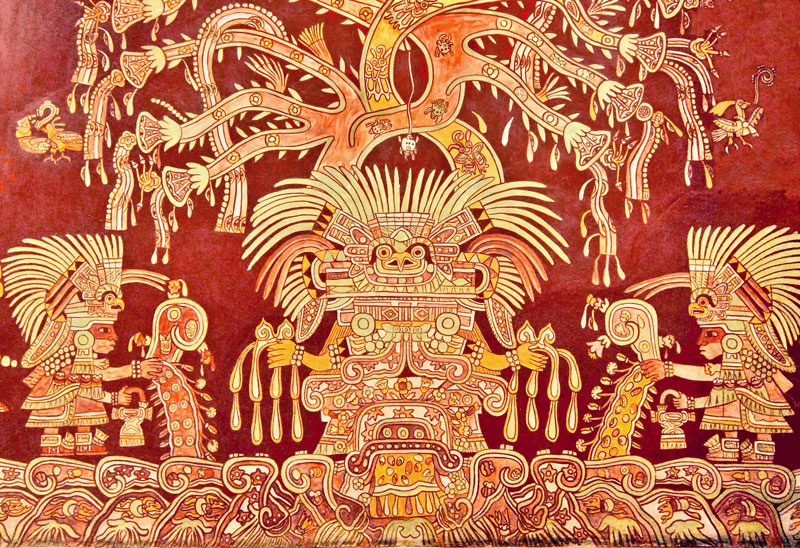While cannabis might be making headlines thanks to further evolved legalization across the globe, it’s nothing new to the world of medicine. More people may be turning to cannabis to alleviate their medical symptoms these days, but it’s been used for centuries by ancient civilizations who were aware of the plant’s healing properties.
In certain cultures, cannabis may have been used to take advantage of its psychoactive properties. Perhaps in addition to the enjoyment of experiencing mind-altering effects, some ancient civilizations also depended on the ability of cannabis to alter state of mind as part of religious and cultural activities, or, even more common, utilized the plant for industrial reasons, like textiles or paper.
The Mayans and Aztecs in Central America, for instance, are among the many ancient people who may have incorporated cannabis into their medical arsenal. [1 and references therein] In addition to this, some archaeological and anthropological evidence also suggests that Mayan and Aztec cultures used cannabis — along with other psychoactive plants — as part of their cultural, spiritual, and religious rituals. [1 and references therein]
Mesoamerican cultures used various hallucinogenic substances to promote mysticism and communication with their gods thanks to entheogenic properties. [2] “Entheogens” is a term that refers to plants and substances that have traditionally been used for sacred rituals. These civilizations believed that their gods looked favorably on these mind-altering substances thanks to their ability to bridge human thought and divine beings. [2]
The Mayan religion emphasized using individuals as communicators between the natural world and supernatural world and relied on psychoactive substances like cannabis as a means to promote such communication. Often, shamans or priests would consume cannabis to serve as intercessors between the natural and the supernatural realms.
Entheogenic substances used by the Aztecs include ololiuqui or Rivea corymbosa, a type of morning glory whose seeds contain ergine, an alkaloid similar to lysergic acid diethylamide. A Mayan drink called balché used the bark of the Lonchocarpus longistylus plant combined with honey manufactured by bees who fed on an ergine-rich type of morning glory, perhaps the ololiuqui. [2] Rather revoltingly, especially to those unfamiliar with psychedelic rituals, Carod-Artal reports that the vomit purged from balché drinkers was collected in bags and hung around their necks! [2]
There’s also teonanacatl, the sacred mushroom of the Aztecs. Teonanacatl contains psilocybin, and in a 1793 historical account of the history of the region, Sahugan reported that “When eaten, they have a bad taste, hurting the throat, and they cause intoxication. They are medicinal for fevers and for rheumatism. Only two or three need to be eaten. Those who eat them see visions and feel a faintness of the heart. And they provoke to lust those who eat a number, or even a few, of them.” [3]
The Mayans also smoked a type of tobacco called Nicotinia rustica that’s said to be hallucinogenic. This tobacco has also been linked to Aztec culture. [4] Then there’s naab, a white lotus or water lily that was smoked or eaten for its psychoactive attributes, and that is frequently depicted on Mayan iconography. [2] The Mayans also reportedly utilized hallucinogenic enemas for medicinal and ceremonial purposes, seeking to reach ecstasy through inebriation. And of course, there’s the psychedelic toads, Bufo alvarius, which contains 5-methoxy-N,N-dimethyltryptamine (5-MeO-DMT) and bufotenine, and Bufo marinus, whose skins were combined by the Mayans with tobacco, the mixture added to alcoholic elixirs. [2]
The use of cannabis and other plants for medicinal purposes in ancient civilizations has been documented. But the historical use of psychoactive, entheogenic substances, akin to recreational cannabis or psychedelic use in modern society, may be lesser known, embellished without much data, or, when scientifically proven, perhaps a little surprising to some.
References:
- Sayin, HU. “The Consumption of Psychoactive Plants in Ancient Global and Anatolian Cultures During Religious Rituals: The Roots of the Eruption of Mythological Figures and Common Symbols in Religions and Myths.” NeuroQuantology, vol.12, no.2, 2014. Journal Impact Factor = 0.453, Times Cited = 15
- Carod-Artal, FJ, “Hallucinogenic Drugs in Pre-Columbian Mesoamerican Cultures.” Neurologia, vol.30, no.1, 2015, pp.42-9. Journal Impact Factor = 2.038, Times Cited = 30
- Sahagun, B. Florentine Codex: General history of the things of New Spain (Codex de Florence), trans. Charles E. Dibble and Arthur J. O Anderson, Salt Lake City: University of Utah Press, 2002.
- Seigel, R. et al. “On the Use of Tagetes lucida and Nicotiana rustica as a Huichol Smoking Mixture: The Aztec “Yahutli” with Suggestive Hallucinogenic Effects,” Economic Botany, Vol. 31, No. 1, 1977, pp. 16-23. Journal Impact Factor = 1.109, Timed Cited 12
Image Credits: Uncovered History, Mind Hacks, Wikipedia










